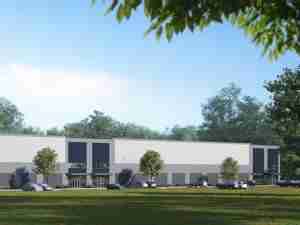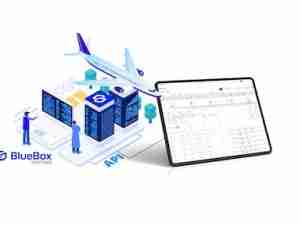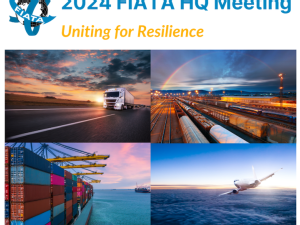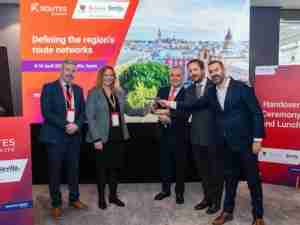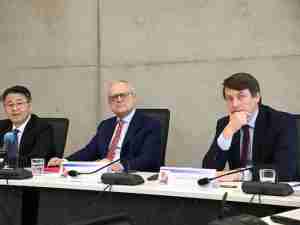 Progress is slow in automating the airfreight business. Only two-thirds of airlines belonging to the IATA Cargo 2000 initiative (C2K) are consistently applying the measurements defined by C2K for higher quality and efficiency, and those members represent a small fraction of the world's cargo-carrying airlines. In the case of freight forwarders, only seven out of twelve C2K members are open to systematic monitoring and control methods in their operations, according to IATA statistics.
Progress is slow in automating the airfreight business. Only two-thirds of airlines belonging to the IATA Cargo 2000 initiative (C2K) are consistently applying the measurements defined by C2K for higher quality and efficiency, and those members represent a small fraction of the world's cargo-carrying airlines. In the case of freight forwarders, only seven out of twelve C2K members are open to systematic monitoring and control methods in their operations, according to IATA statistics.
'We must assume that thorough quality controls in shipping processes are the exception rather than the rule,' said Felix Keck, head of Traxon, the world's largest e-communications platform for airfreight, at the 2008 IATA World Cargo Symposium in Rome. The reason, Keck said, is that many airfreight companies are unwilling to make the investment to enable integration that would make the end-to-end air supply chain more efficient and productive.
'The learning curve is long. Despite some encouraging exceptions, old-fashioned forms of communications such as fax and telephone are still all too common in the air freight industry,' Keck said. 'Only a handful of forwarders are profiting from the innovative technological potential offered by the market.'
One glaring problem is that many companies merely optimize their own internal processes instead of scrutinizing the entire air logistics chain to improve the information flow between the different partners, Keck said. 'The success factor lies in the data and information exchange being seamless between all participating air freight partners,' said Keck.
Failure to be integrated into a seamless, end-to-end data and information system, such as those offered by specialists like Traxon, makes the transmission and processing of air freight data more difficult, according to Keck, 'Air freight which is managed in the conventional way has longer transport times, which ultimately results in higher costs,' he told the Rome gathering.
However, history has shown that progress can be achieved through outside pressure, Keck said. Stricter post-9/11 security requirements led US customs authorities to demand the adoption of electronic data communication for airfreight documentation, triggering a genuine push towards automation. As a result, the electronic air waybill (e-AWB) now has more than a 50% penetration in some markets.
Keck said the hard work of convincing the airfreight community of automation's benefits would ultimately pay off. 'The technology is there, and it's proven. Now all we have to do is make clear to certain partners in the transport chain that they can make money by using it, even in the short run,' he said.
As an active member of the IATA e-freight initiative and the Cargo 2000 quality program, Traxon Europe is doing its utmost to promote the automation of communications processes in the airfreight industry.
